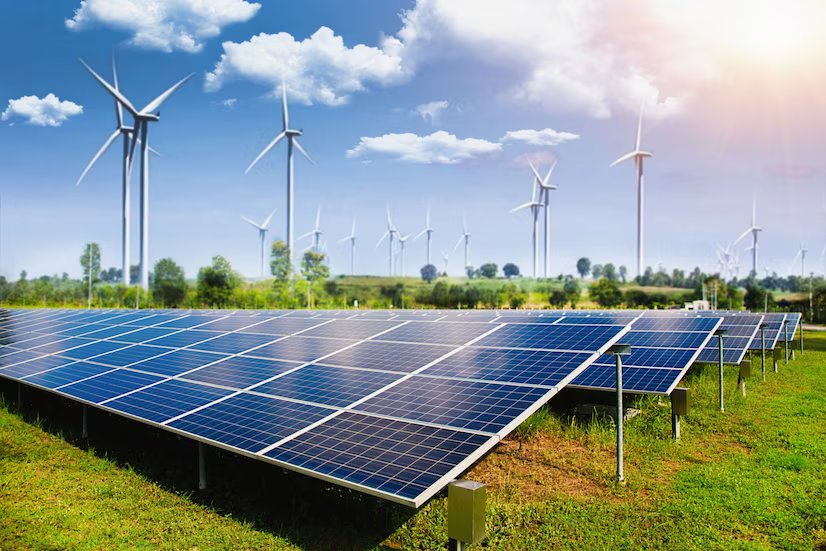- 1.1 Energy Storage:
- 1.2 Grid Independence:
- 1.3 Energy Self-Sufficiency:
- 1.4 Time-of-Use Optimization:
- 1.5 Environmental Impact:
- 1.6 Remote Power Supply:
- 1.7 Reduced Strain on the Grid:
- 1.8 Long-Term Cost Savings:
- 1.9 Technological Advancements:
- 1.10 Support for Renewable Energy Transition:
A solar battery, also known as a solar energy storage system or solar storage battery, is a device that stores the excess electricity generated by solar panels during periods of sunlight. This stored energy can be used when the sun is not shining, such as at night or on cloudy days. Solar batteries are vital to enhancing the efficiency and reliability of solar power systems, as they help address the intermittent nature of solar energy production.
Solar batteries play a crucial role in enhancing the efficiency and reliability of solar power systems.
Here are some key benefits of using solar batteries:
Energy Storage:
Solar batteries store excess energy generated by solar panels during periods of sunlight. This stored energy can be used when solar panels are not producing electricity, such as at night or during cloudy days. This ensures a continuous and reliable power supply.
Grid Independence:
Solar batteries enable homeowners and businesses to reduce their dependence on the grid. By storing excess energy, users can rely on their stored power during grid outages or periods of high electricity demand, helping to maintain an uninterrupted power supply.
Energy Self-Sufficiency:
Solar batteries empower individuals and businesses to become more self-sufficient in terms of energy. Users can reduce their reliance on external power sources by storing excess energy, contributing to a more resilient and sustainable energy infrastructure.
Time-of-Use Optimization:
In areas with time-of-use electricity pricing, solar batteries allow users to store energy when electricity rates are low and use stored energy during peak-demand periods when rates are higher. This can lead to cost savings and better financial management of energy consumption.
Environmental Impact:
Solar batteries contribute to a cleaner and more sustainable energy system. By storing solar energy and reducing the need for energy from conventional sources, solar batteries help decrease greenhouse gas emissions and mitigate the environmental impact of traditional energy production.
Remote Power Supply:
Solar batteries are precious in remote areas where access to the grid may be limited or unreliable. They provide a reliable power source for off-grid homes, cabins, or businesses, improving energy access in underserved regions.
Reduced Strain on the Grid:
By storing excess energy locally, solar batteries help reduce the overall demand on the electrical grid during peak times. This can lead to a more stable and efficient grid and potentially avoid the need for expensive grid infrastructure upgrades.
Long-Term Cost Savings:
While the initial cost of purchasing and installing solar batteries can be significant, they can lead to long-term cost savings. Users can benefit from lower electricity bills, potential government incentives, and a more resilient energy system, making the investment worthwhile.
Technological Advancements:
Ongoing advancements in solar battery technology, including improvements in energy density, cycle life, and overall performance, continue to make these systems more efficient and cost-effective.
Support for Renewable Energy Transition:
Solar batteries are vital in supporting the transition to a renewable energy future. By addressing the intermittent nature of solar power, batteries help make renewable energy sources more reliable and practical for widespread adoption.
Critical components of a solar battery system:
- Solar Panels: Convert sunlight into electricity.
- Inverter: Converts direct current (DC) generated by solar panels into usable alternating current (AC).
- Charge Controller: Regulates the charging of the battery to prevent overcharging.
- Battery Storage: Stores excess electricity generated by solar panels.
- Monitoring System: Monitors the performance of the solar battery system.
Future Trends in Solar Batteries:
Advanced Battery Technologies:
Ongoing research and development focus on improving battery technologies, including lithium-ion batteries and beyond. Advances in energy density, cycle life, and safety features are expected to make solar batteries more efficient and cost-effective.
Energy Storage Systems Integration:
Integrating solar batteries with smart grid technology is anticipated to become more widespread. This will allow for better energy storage and distribution management, optimize renewable energy sources, and reduce stress on the grid.
Increased Energy Density:
Future solar batteries are expected to have higher energy density, meaning they can store more energy in a smaller, lighter package. This will result in more compact and efficient solar battery systems.
Longer Cycle Life:
Battery chemistry and design improvements aim to extend the lifespan of solar batteries. Longer cycle life means fewer replacements and increased overall system reliability.
Cost Reduction:
As technology advances and manufacturing processes improve, solar battery costs will decrease. This will make solar energy storage more affordable and accessible for a larger population.
Integration with Other Renewable Sources:
Solar batteries will likely play a key role in integrating various renewable energy sources, such as wind and solar, into a cohesive and reliable energy system. This integration can contribute to a more resilient and sustainable power grid.
Innovative Materials:
Research is ongoing to explore new materials for battery components, such as electrodes and electrolytes, that can improve performance, safety, and sustainability.
Second-life Battery Applications:
As batteries end their useful life in solar applications, they may still have significant capacity for other applications, such as stationary energy storage or electric vehicle use. Developing second-life applications can extend the overall value and sustainability of solar batteries.
The future of solar batteries holds great promise, with continuous technological advancements, increased efficiency, and broader integration into the overall energy landscape. These developments will likely contribute to a more sustainable and resilient energy future.
